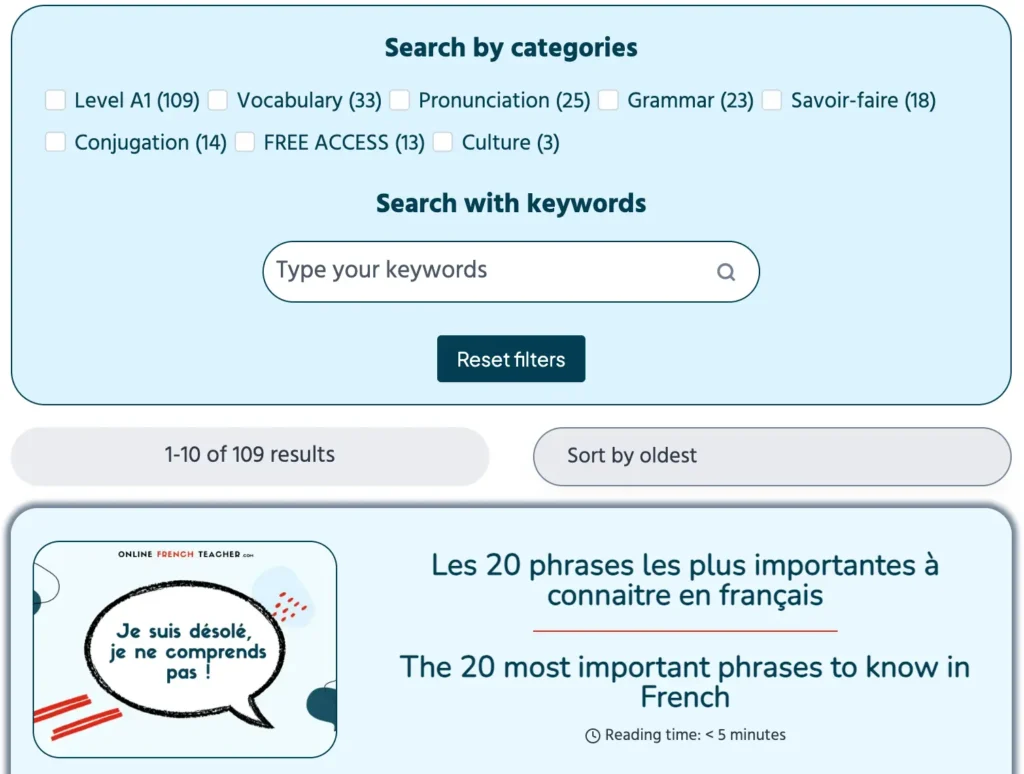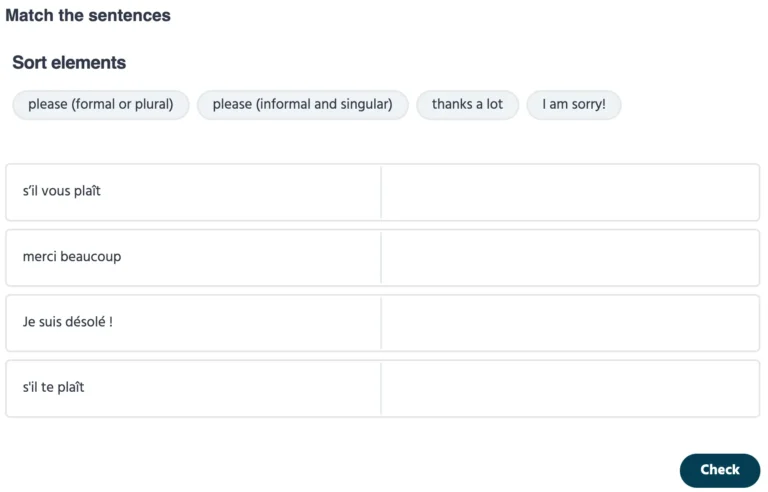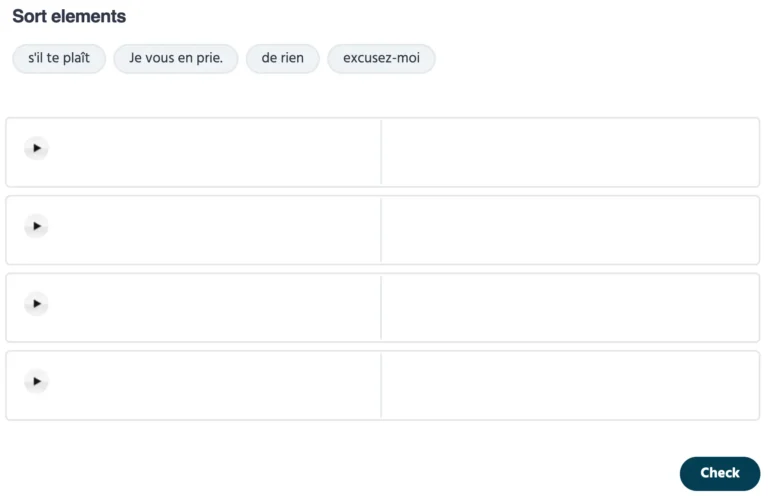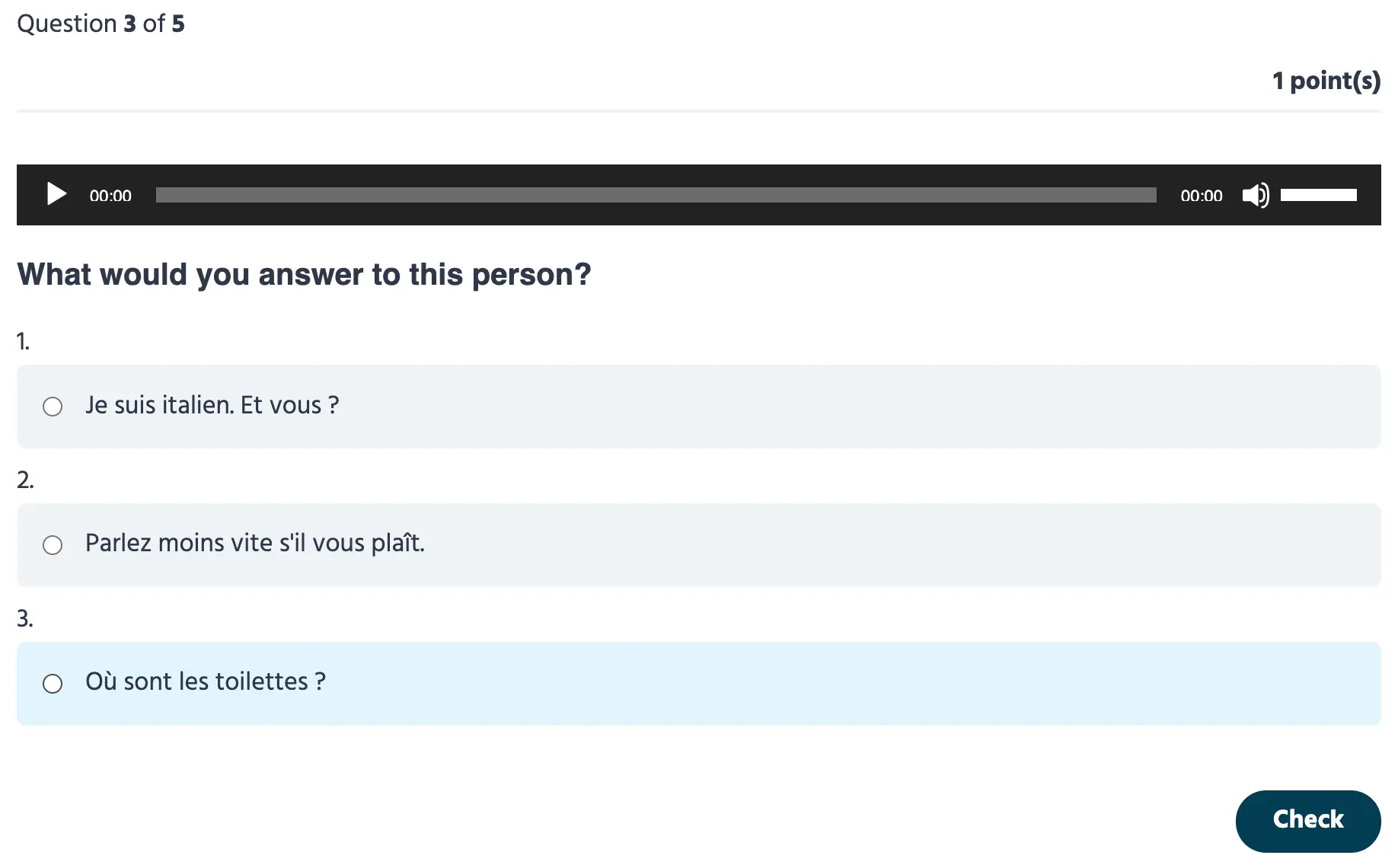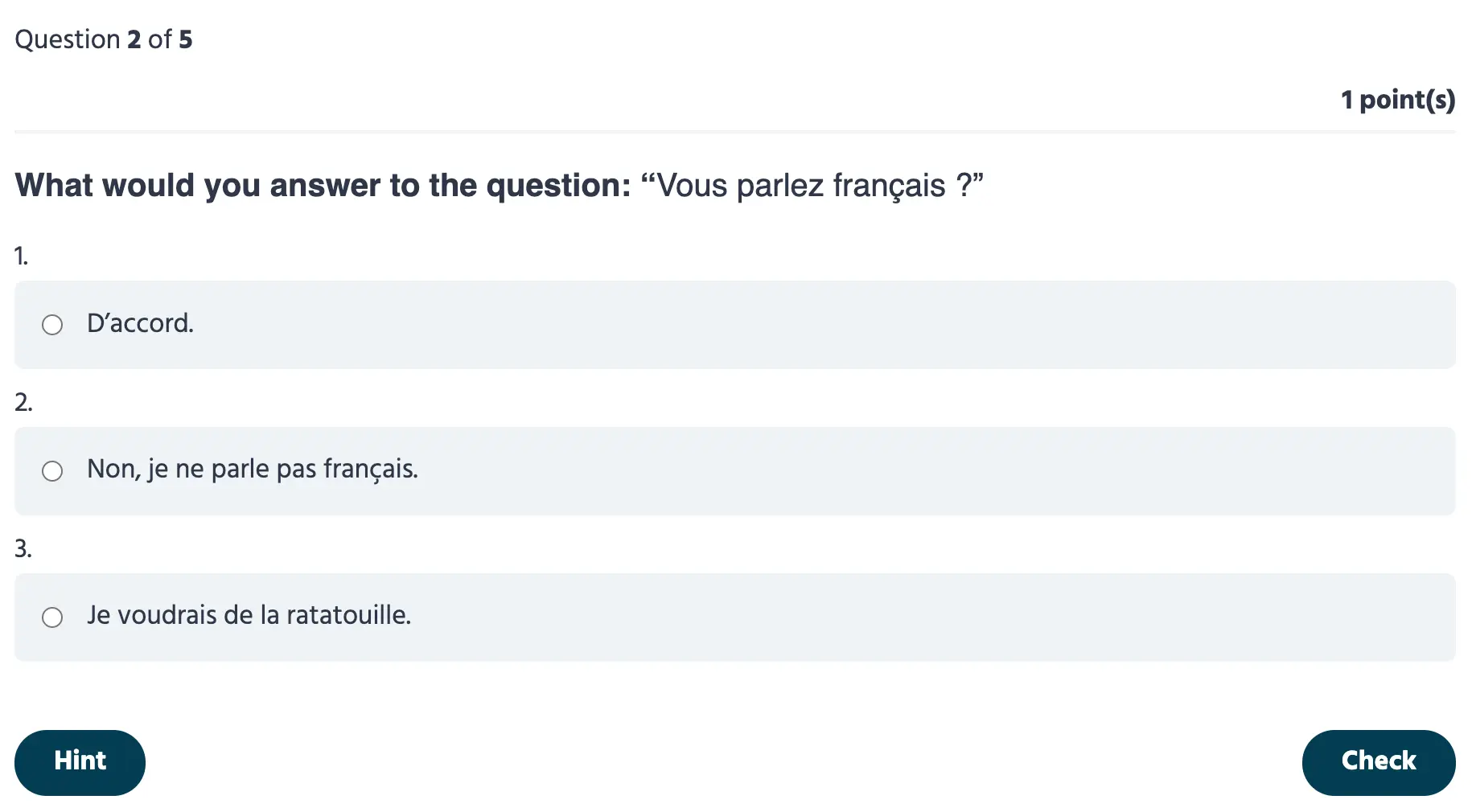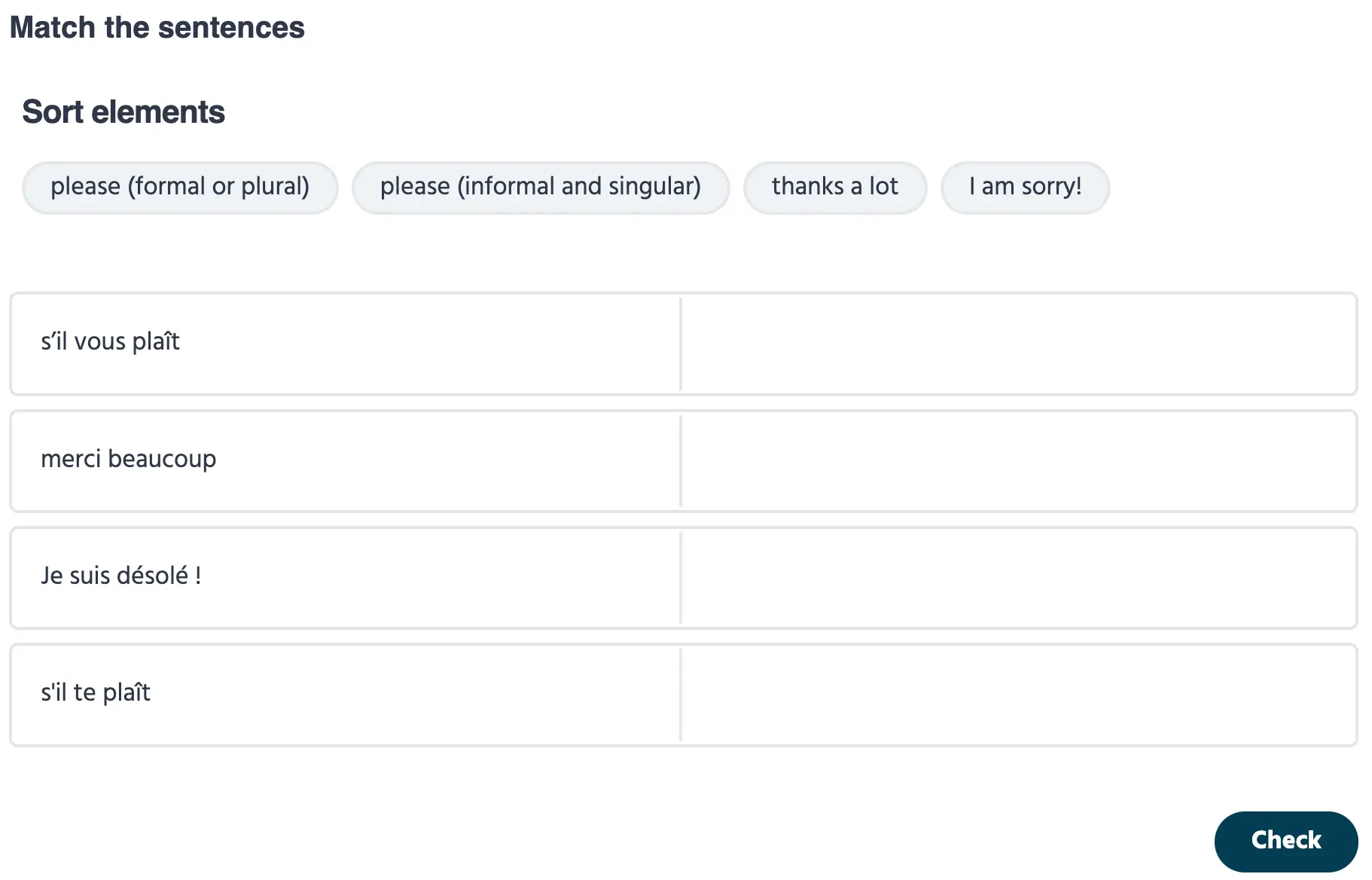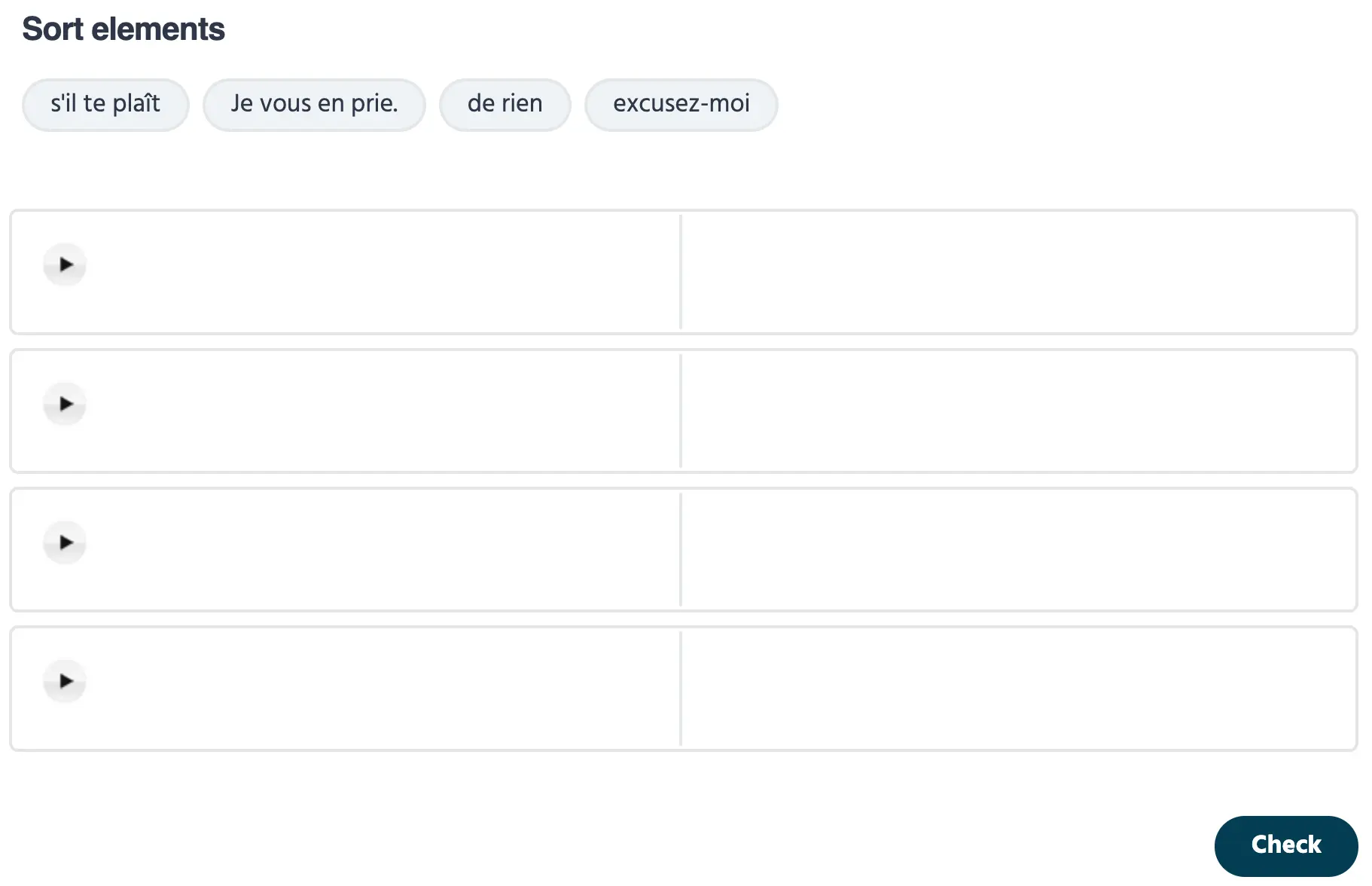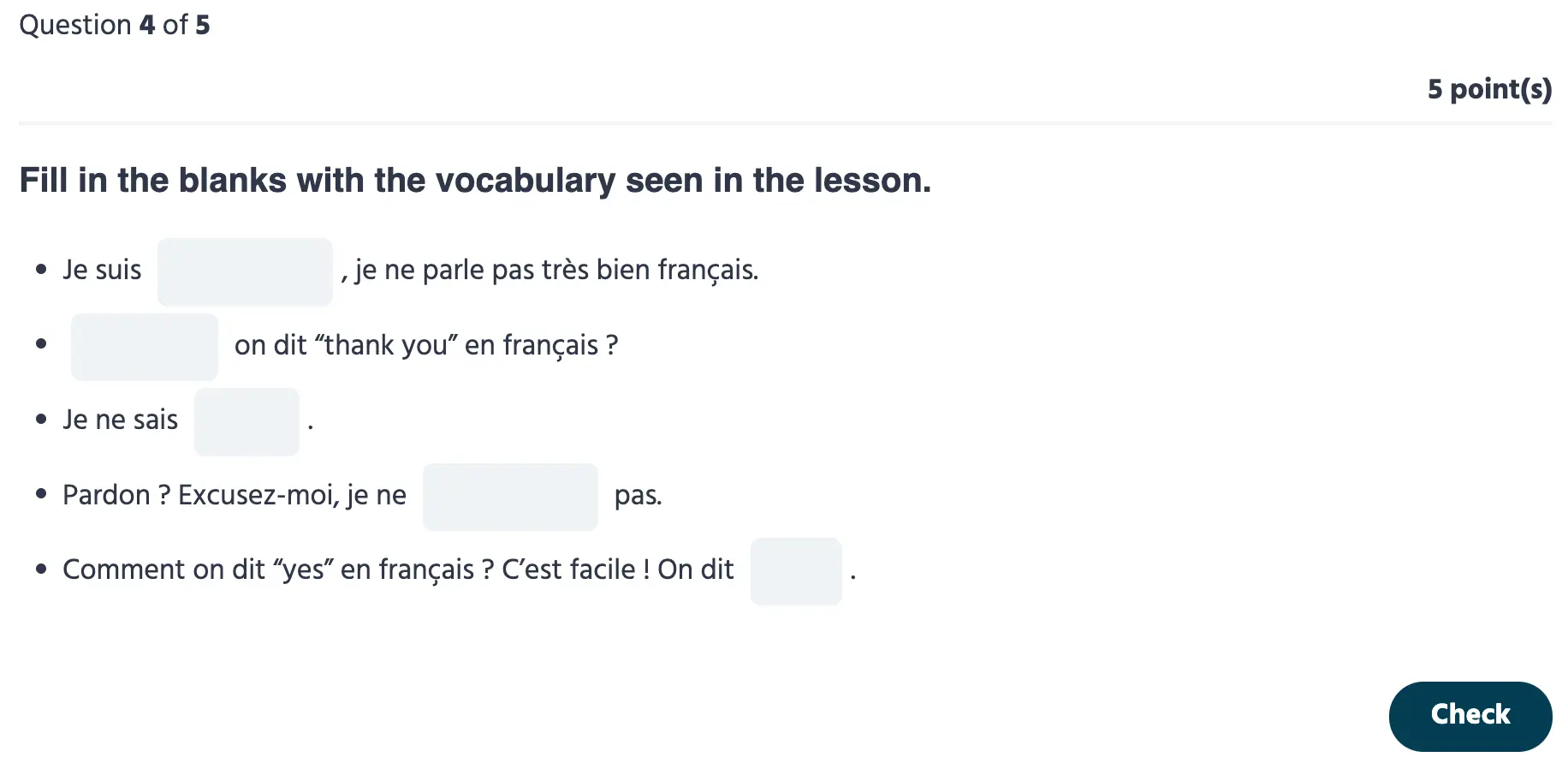🇫🇷 La plateforme E-learning de français, comment ça marche ?
🇬🇧 How does the French E-learning platform work?
Access to the French E-learning platform
The French E-learning platform is available 24/7, from a computer, smartphone or tablet.
The first two units of the platform are open access. Anyone can discover the lessons, listen to the audios and do the exercises.
To access all the units on the platform, you need to register. There are three access options.
The My French Learning page allows you to see all the units, lessons and exercises in the programme, as well as your progress through the programme.
Organisation of the French E-learning platform
The French E-learning platform is organised hierarchically with the following levels:
LEVEL > SECTION > UNIT > LESSON + EXERCISE
LEVEL
First, it makes sense to group the learning content according to French language level (A1, A2, B1, B2, C1, C2). This is the first level of organisation, called LEVEL.
SECTION
Within the levels, broad objectives are set. These are called SECTIONS. In A1 level, there are 4 sections, i.e. 4 general objectives:
UNIT
UNITS are the folders containing the content, i.e. the lessons and exercises. Their titles indicate simple, concrete and precise linguistic objectives. Thanks to the different lessons and exercises in the units, it will be possible to achieve the objective given in the title.
LESSON
LESSONS are the content, the explanations, that teach you French.
There are 6 categories of lessons:
EXERCISE
EXERCICES are situations and examples that allow you to practise and assimilate the knowledge covered in the lesson.
All these components can be found on the My French Learning page.

Navigation

Finding your way around this platform should be very easy.
The platform is organised in such a way that it is preferable to start with the first unit and continue in the established order. In fact, the progression has been designed so that the first lessons are the most basic, the most essential, and as you go along the difficulty increases.
So, to move from one lesson to the next, it’s a good idea to click on the “Next lesson” button at the bottom of the lesson.
But that doesn’t mean you can’t let your curiosity guide you and discover the lessons ‘à la carte’. So how do you navigate and find the lessons you want?
Firstly, on My French Learning page, as you can see from the previous image, you have a complete view of all the levels, all the sections, all the units, all the lessons and all the exercises.
Then, when you’re reading a lesson, you can decide where you want to go in the platform using the navigation bar on the left of the screen.
Finally, there’s the perfect tool for searching for a specific lesson: the French Lesson Finder. You can search for a lesson by category and/or keyword.
Structure of a lesson
The header
At the beginning of each lesson, you will find the following elements:

The content
French lessons are designed to explain unfamiliar concepts in the clearest possible way. Explanations are given in English and numerous examples are used to illustrate these explanations.
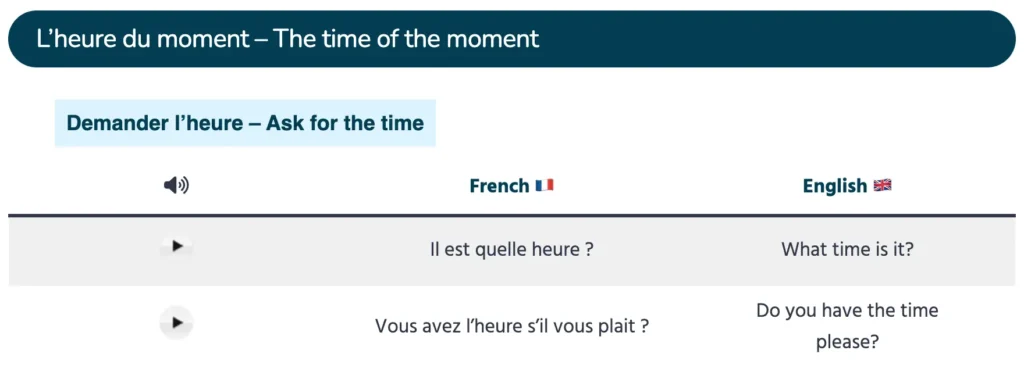
From time to time, you will come across light red boxes. These are cultural illustrations, i.e. documents (texts, drawings, GIFs, videos, etc.) that highlight the explanations in the lesson.

The footer
At the end of each lesson, you will find the following elements:

Exercices
At the end of most lessons, there are exercises to ensure that you have understood the lesson correctly and to help you apply your new knowledge.
These exercises serve as a check. A minimum score of 80% is required for the lesson to be validated. You can repeat the exercises as many times as you like.
These exercises can focus on written comprehension, written expression or oral comprehension.

